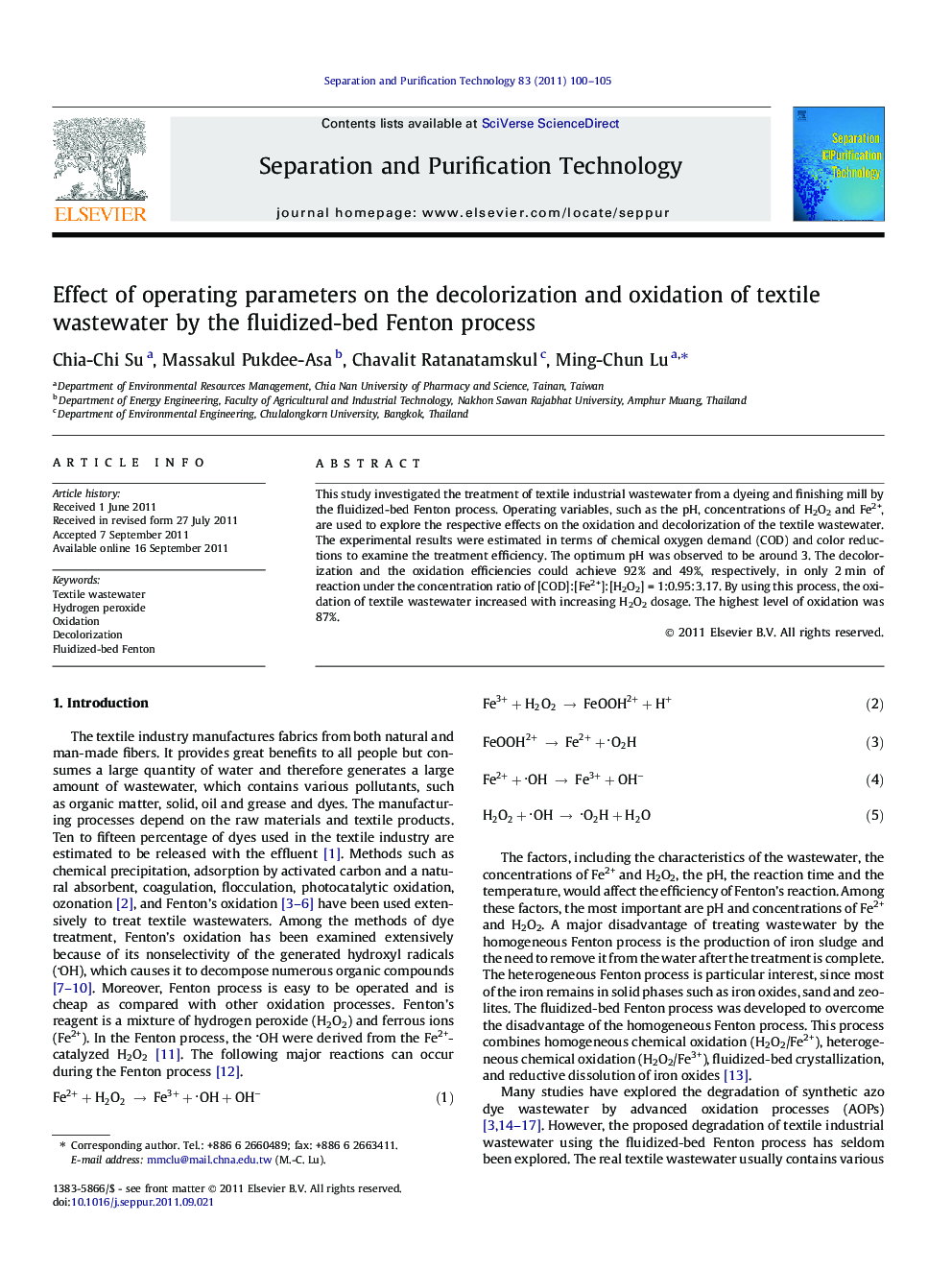| Article ID | Journal | Published Year | Pages | File Type |
|---|---|---|---|---|
| 642461 | Separation and Purification Technology | 2011 | 6 Pages |
This study investigated the treatment of textile industrial wastewater from a dyeing and finishing mill by the fluidized-bed Fenton process. Operating variables, such as the pH, concentrations of H2O2 and Fe2+, are used to explore the respective effects on the oxidation and decolorization of the textile wastewater. The experimental results were estimated in terms of chemical oxygen demand (COD) and color reductions to examine the treatment efficiency. The optimum pH was observed to be around 3. The decolorization and the oxidation efficiencies could achieve 92% and 49%, respectively, in only 2 min of reaction under the concentration ratio of [COD]:[Fe2+]:[H2O2] = 1:0.95:3.17. By using this process, the oxidation of textile wastewater increased with increasing H2O2 dosage. The highest level of oxidation was 87%.
► The treatment of real textile wastewater was explored by fluidized-bed Fenton process. ► This process provides a high COD removal efficiency and also reduces the amount of iron sludge. ► The decolorization and oxidation efficiency in 2 min were 92% and 49%, respectively.
